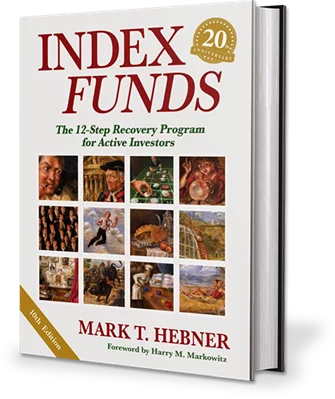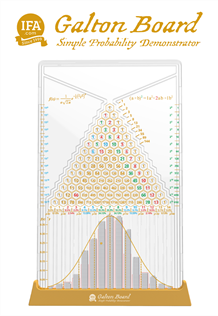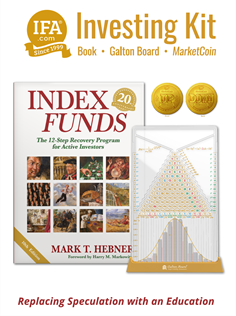Short winning streaks can feel convincing — but in noisy markets, they rarely prove skill. This is the second article in a three-part series on luck, skill, and statistical significance in active fund management. Here we explore how much data you really need to separate genuine talent from randomness — and why even long winning streaks often fail the test of time.
Every market cycle produces its heroes. A manager beats the benchmark three years in a row, inflows surge, and the financial press crowns a new star. For investors, the temptation is hard to resist. If skill exists, why not back the winners?
But markets are noisy. Returns bounce with news, sentiment, and shocks no one can predict. When a fund outperforms for a short stretch, we want to believe it's down to brilliance, but probability says otherwise. Even a coin can land heads several times in a row. The question is not whether streaks happen, but whether they mean anything.
So how long does performance need to last before we can confidently call it skill? The answer is humbling.
How Long Is "Long Enough"? The Academic View
Statistical significance is the standard scientists use to separate signal from noise. In investing, it asks whether a manager's outperformance differs from zero by more than random variation. The conventional test is the t-statistic. A t-stat of 2 means there's only about a 5% chance the result is due to luck. (We'll go into more detail on this in our next article, but for a primer on this concept, see IFA's Investor Guide to Financial Statistics.)
The problem is that very few fund managers ever come close to proving they possess genuine skill, and the evidence on how long it takes to reach that bar is remarkably consistent.
Michael Jensen's 1968 study — the foundation of modern fund evaluation — examined two decades of data and found that managers, on average, failed to produce statistically significant alpha over two decades. This research challenges assumptions about consistent skill. Even long records of apparent outperformance, he showed, often reflected noise rather than genuine skill (Jensen, 1968).
Mark Carhart's 1997 paper extended Jensen's work using 31 years of U.S. mutual fund data and four-factor risk adjustments. Once those risks were accounted for, alpha persistence vanished. His findings implied that even over three decades, only a handful of managers achieved results unlikely to be explained by chance.
Eugene Fama and Kenneth French went further in a study published in 2010. Simulating thousands of hypothetical funds, they estimated how many years of returns would be required to demonstrate skill beyond luck. Assuming an annual alpha of 2% and realistic volatility, it would take roughly 50 to 60 years of monthly data to achieve a t-statistic of 2 — the conventional threshold for significance. Few managers, and even fewer firms, have that kind of longevity.
Other researchers reached similar conclusions. Kosowski, Timmermann, Wermers, and White (2006) used bootstrap techniques and found that a small minority of managers might demonstrate skill over 30 to 40 years, though their results were fragile. Barras, Scaillet, and Wermers (2010) applied a false discovery framework and concluded that after accounting for multiple testing, only about 1% of mutual fund managers displayed genuine skill — and roughly the same proportion showed significant underperformance. The rest were statistically indistinguishable from zero.
Ferson and Chen (2018) re-examined performance using methods that adjust for changing market regimes. Even across 25-year periods, they found that apparent skill among top managers largely disappeared once shifts in market dynamics were considered.
Together, these studies tell a consistent story: proving skill requires vast amounts of data and a large, stable alpha. In fact, research indicates that proving consistent outperformance would require a track record exceeding most managers' entire careers.
Across time horizons from three to 20 years, 89% to 97% of active US equity funds lagged their benchmarks on a risk-adjusted basis — stark evidence that consistent skill is the rare exception, not the rule. Source: SPIVA US Scorecard
The Small-Sample Trap
Human intuition isn't wired for statistics. We're wired to see patterns — even when none exist. Psychologists call this the law of small numbers: our tendency to draw big conclusions from tiny samples.
In investing, this bias is everywhere. We see a three-year streak and declare a genius. We watch a sector surge and convince ourselves it's a new era. But small samples exaggerate randomness. A handful of results tells us almost nothing about the underlying process, yet we act as if it does.

The Factor Zoo Problem — and the Perils of Multiple Testing
Even if we had more data, another problem lurks: too many tests. In a world with thousands of managers, styles, and strategies, some will look brilliant purely by chance.
In a 2016 study, economists Campbell Harvey, Yan Liu, and Heqing Zhu call this the factor zoo. Their research showed that when academics test hundreds of investment factors, most statistically significant results vanish once you account for how many tests are run.
A t-stat of 2 — the conventional bar for significance — is far too lenient when dozens or hundreds of variations are being tried simultaneously. The same logic applies to fund management. With more than 10,000 funds worldwide, some are bound to look exceptional at any moment, even if they're all just flipping coins.
Multiple testing creates an optical illusion: the more we look for winners, the more "stars" we seem to find. The truth is, most are false positives — statistical mirages that fade when re-tested.
When Hot Fund Families Cool
If the math feels abstract, real-world data makes it tangible. Across fund families, short-term brilliance often melts away once markets shift or funds grow too large.
Royce Funds built its reputation in small-cap value investing. Early success drew massive inflows, but small caps are capacity-constrained — as assets ballooned, trading costs and market impact eroded returns. IFA's analysis of 32 Royce strategies found that 22 no longer exist. Turnover was high, fees substantial, and alpha disappeared once luck and costs were stripped away.
T. Rowe Price shows the same pattern. IFA's full-history audit of 120 strategies — counting both survivors and closed funds — found that 61.7% underperformed or failed to survive. Only 38.3% produced positive alpha since inception, and just 3.3% achieved statistical significance at the 97.5% confidence level. Those odds aren't evidence of widespread skill; they're what we'd expect if chance were doing most of the work.
Victory Capital, an aggregator that absorbed funds from USAA, Munder, and RS, hoped that diversification across teams would smooth performance. Instead, returns varied widely, and most strategies lagged benchmarks once merged and scaled. Short-term success gave way to the statistical rule of mean reversion.
This pattern echoes the findings of a recent Morningstar study which found that inflows often peak just before performance fades.
These firms employ skilled professionals. Their struggles underline a structural truth: markets are efficient enough that luck can masquerade as skill for years and sometimes decades.
How to Think Like a Statistician — Without the Math
For investors, the takeaway isn't cynicism — it's discipline. You don't need a PhD to think statistically; you just need to ask better questions.
- Don't generalize from short runs. A few good years mean little. Wait for at least a full market cycle — or better, several.
- Check the ratio of alpha to volatility — the signal-to-noise ratio. Small, noisy edges can take decades to confirm.
- Assume multiple testing. Thousands of funds mean thousands of chances for false positives. Demand a higher standard of proof.
- Look at the whole family, not just the survivors. Dead funds tell the real story.
- Focus on net-of-fee results. Gross alpha doesn't pay your bills — net returns do.
Think like a scientist: be skeptical of easy narratives, patient with data, and humble about what can be known. Readers can explore these themes further in Step 3, of Mark Hebner's book, Index Funds: 12-Step Recovery Program for Active Investors, which examines why apparent stock-picking skill so often turns out to be luck.
Patience, Probability, and the Long Game
The reality is that markets tend to reward patience, not pattern-seeking.
For most investors, the rational response isn't to keep hunting for exceptions — it's to accept the evidence. Alpha may be rare, variable, and costly to pursue. Broad diversification, low fees, and long horizons offer a far better route to success.
As Mark Hebner likes to say, "Markets reward discipline, not drama."
In Part 3, we'll show how to use IFA's calculator to test whether a manager's results clear the bar — or merely ride the wave of luck.
Read Part 1 here.
Important Information
Resources
Barras, L., Scaillet, O., & Wermers, R. (2010). False discoveries in mutual fund performance: Measuring luck in estimated alphas. Journal of Finance, 65(1), 179–216. https://doi.org/10.1111/j.1540-6261.2009.01527.x
Carhart, M. M. (1997). On persistence in mutual fund performance. Journal of Finance, 52(1), 57–82. https://doi.org/10.1111/j.1540-6261.1997.tb03808.x
Fama, E. F., & French, K. R. (2010). Luck versus skill in the cross-section of mutual fund returns. Journal of Finance, 65(5), 1915–1947. https://doi.org/10.1111/j.1540-6261.2010.01598.x
Harvey, C. R., Liu, Y., & Zhu, H. (2016). … and the Cross-Section of Expected Returns. The Review of Financial Studies, 29(1), 5–68. https://doi.org/10.1093/rfs/hhv059
Jensen, M. C. (1968). The performance of mutual funds in the period 1945–1964. Journal of Finance, 23(2), 389–416. https://doi.org/10.2307/2325404
Kosowski, R., Timmermann, A., Wermers, R., & White, H. (2006). Can mutual fund "stars" really pick stocks? New evidence from a bootstrap analysis. Journal of Finance, 61(6), 2551–2595. https://doi.org/10.1111/j.1540-6261.2006.01015.x
ROBIN POWELL is the Creative Director at Index Fund Advisors (IFA). He is also a financial journalist and the Editor of The Evidence-Based Investor. This article reflects IFA's investment philosophy and is intended for informational purposes only.
DISCLOSURES:
This content is for informational purposes only and does not constitute investment advice, an offer, or a solicitation to buy or sell any security.Referenced research and studies are provided for informational purposes and illustrate general principles. Readers should recognize that results derived from statistical methods, including multiple hypothesis testing, may include findings attributable to chance. Statistical significance does not guarantee predictive reliability. We recommend consulting a fiduciary or qualified financial advisor before making any investment decisions to ensure alignment with personal financial goals, risk tolerance, and circumstances. Past performance is not indicative of future results. All investments involve risk, including the possible loss of principal. Examples are for illustration only. Any references to specific managers or funds are not recommendations and are provided solely to discuss general principles. Benchmarks are unmanaged and cannot be invested in directly.
IFA does not endorse or guarantee the accuracy of third-party content. Any references to specific fund families, managers, or strategies are provided solely for illustrative purposes and should not be construed as endorsements, recommendations, or guarantees of performance. Past performance does not imply future results.
Quotes and images included are for illustrative purposes only and should not be considered as endorsements, recommendations, or guarantees of any particular financial product, service, or advisor. IFA does not endorse or guarantee the accuracy of third-party content. For those seeking additional insights into the challenges of market timing, Step 4 of Mark Hebner's award-winning book ‘Index Funds: The 12-Step Recovery Program for Active Investors' offers a detailed perspective. This book is available free of charge here. References to third-party resources, including books, are informational and do not constitute endorsements or solicitations. IFA does not receive compensation related to this recommendation
For additional information about IFA, including detailed information about services, compensation, and potential conflicts of interest, please review our brochure available both at www.adviserinfo.sec.gov and www.ifa.com.














